Succulents have become increasingly popular in recent years, and for good reason. These unique plants are known for their ability to store water in their leaves, stems, and roots, making them incredibly resilient and low-maintenance. However, one key factor that often gets overlooked when it comes to succulent care is the potting mix. The right potting mix is essential for the growth and health of your succulents, as it provides the necessary nutrients, drainage, and aeration that these plants need to thrive.
Understanding the Importance of Potting Mix for Succulents
The potting mix plays a crucial role in the overall health and growth of succulents. Unlike other plants, succulents have specific needs when it comes to soil composition. They require a well-draining mix that allows excess water to flow out of the container quickly, preventing root rot and other issues caused by overwatering. Additionally, succulents prefer soil that is low in organic matter, as too much organic matter can retain moisture and lead to root rot.
The Basic Ingredients of a Good Succulent Potting Mix
A good succulent potting mix typically consists of three main components: soil, sand, and perlite. The soil provides the necessary nutrients for the plants, while the sand and perlite improve drainage and aeration.
When it comes to soil, it’s important to choose a well-draining option that is specifically formulated for succulents. Avoid using regular garden soil or potting soil, as these tend to retain too much moisture. Instead, opt for a cactus or succulent soil mix that is specifically designed to meet the needs of these plants.
Sand is another essential ingredient in a succulent potting mix. It helps to improve drainage by creating larger spaces between soil particles, allowing excess water to flow through more easily. Coarse sand or builder’s sand is ideal for succulents, as it provides the necessary drainage without compacting the soil.
Perlite is a lightweight, porous material that helps to improve aeration in the potting mix. It creates air pockets in the soil, allowing oxygen to reach the roots and preventing them from becoming waterlogged. Perlite also helps to prevent compaction, which can hinder root growth.
How to Choose the Right Soil for Your Succulents
When selecting soil for your succulents, it’s important to consider the specific needs of your plants. Different species of succulents have varying preferences when it comes to soil composition. Some prefer a sandy soil mix, while others thrive in a more loamy mix.
Research the specific requirements of your succulent species to determine the best type of soil for them. For example, desert-dwelling succulents like cacti prefer a sandy soil mix, while tropical succulents like Echeveria prefer a more loamy mix with higher organic matter content.
If you’re unsure about the specific needs of your succulents, a general cactus or succulent soil mix is a safe bet. These mixes are typically formulated to meet the needs of a wide range of succulent species and provide good drainage and aeration.
The Role of Drainage in Succulent Potting Mixes
Drainage is crucial for succulent potting mixes because these plants are highly susceptible to root rot caused by overwatering. When excess water sits in the soil for too long, it can lead to root rot and other issues that can ultimately kill your plants.
To ensure proper drainage in your succulent potting mix, it’s important to use a well-draining soil and incorporate materials like sand and perlite. These materials help to create larger spaces between soil particles, allowing excess water to flow out of the container quickly.
In addition to using a well-draining potting mix, it’s also important to choose the right type of container for your succulents. Opt for containers with drainage holes to allow excess water to escape. If you’re using a container without drainage holes, be sure to add a layer of gravel or small rocks at the bottom to create a reservoir for excess water.
Tips for Mixing Your Own Succulent Potting Mix
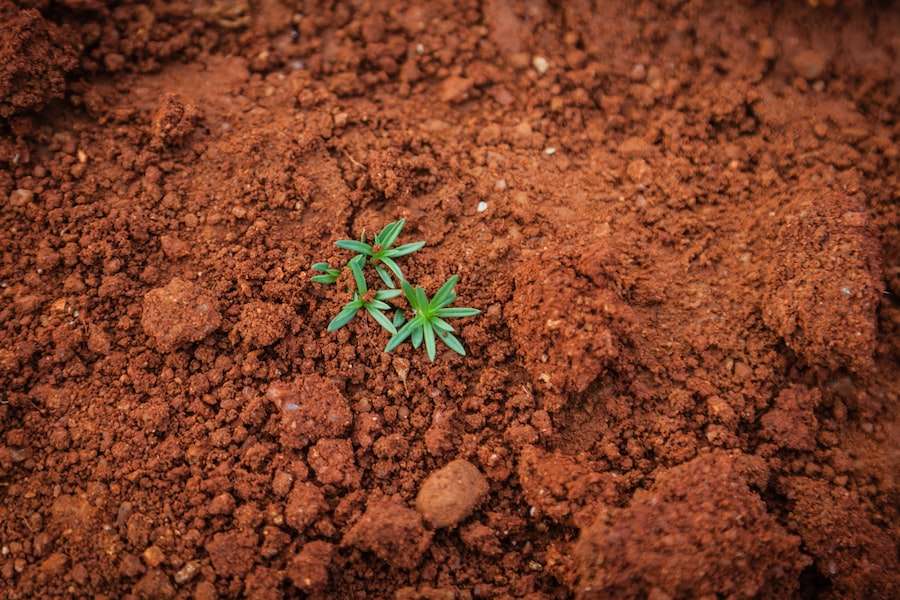
If you prefer to mix your own succulent potting mix, here are some step-by-step instructions to help you get started:
1. Start with a base of cactus or succulent soil mix. This will provide the necessary nutrients for your plants.
2. Add sand to improve drainage. Aim for a ratio of 1 part sand to 2 parts soil.
3. Incorporate perlite to improve aeration. Aim for a ratio of 1 part perlite to 2 parts soil.
4. Mix the ingredients together thoroughly until well combined.
5. Test the moisture level of the potting mix by squeezing a handful in your hand. It should feel slightly damp but not wet.
6. Adjust the moisture level as needed by adding more soil or perlite if it feels too wet, or adding more water if it feels too dry.
The Benefits of Using Commercial Succulent Potting Mixes
While mixing your own succulent potting mix can be a fun and rewarding experience, there are also advantages to using pre-made commercial succulent potting mixes.
One of the main benefits of using commercial mixes is that they are specifically formulated for succulents, taking into account their unique needs for drainage and aeration. These mixes often contain a blend of soil, sand, and perlite, providing an ideal balance for succulent growth and health.
Commercial mixes also save you time and effort, as they come ready-to-use straight out of the bag. This can be especially beneficial for beginners or those who don’t have the time or resources to mix their own potting mix.
Additionally, commercial mixes are often sterilized, which helps to prevent the growth of harmful bacteria and fungi that can cause root rot and other issues. This can be particularly important if you’re repotting succulents or introducing new plants to your collection.
How to Repot Succulents with the Right Potting Mix
Repotting succulents is an important part of their care routine, as it allows them to grow and thrive in a larger container with fresh potting mix. Here are some instructions for repotting succulents with the appropriate potting mix:
1. Choose a container that is slightly larger than the current one, with drainage holes at the bottom.
2. Prepare the new potting mix by either mixing your own or using a pre-made commercial mix.
3. Gently remove the succulent from its current container by loosening the soil around the edges and carefully lifting it out.
4. Inspect the roots for any signs of damage or rot. Trim away any dead or damaged roots with clean, sharp scissors or pruning shears.
5. Place a layer of fresh potting mix at the bottom of the new container, ensuring that it covers the drainage holes.
6. Position the succulent in the center of the container and fill in the sides with more potting mix, gently pressing it down to secure the plant.
7. Leave a small gap between the top of the soil and the rim of the container to allow for watering.
8. Water the newly repotted succulent lightly, allowing excess water to drain out of the bottom.
Common Mistakes to Avoid When Potting Succulents
When it comes to potting succulents, there are several common mistakes that can hinder their growth and health. Here are some mistakes to avoid:
1. Overwatering: Succulents are drought-tolerant plants and do not require frequent watering. Overwatering can lead to root rot and other issues. Only water your succulents when the soil is completely dry.
2. Using the wrong type of soil: Regular garden soil or potting soil is not suitable for succulents, as they tend to retain too much moisture. Use a well-draining cactus or succulent soil mix instead.
3. Not providing enough drainage: Succulents require excellent drainage to prevent root rot. Ensure that your containers have drainage holes and use a well-draining potting mix.
4. Using containers without drainage holes: Containers without drainage holes can lead to waterlogged soil and root rot. If you’re using a container without drainage holes, add a layer of gravel or small rocks at the bottom to create a reservoir for excess water.
5. Overcrowding: Succulents need space to grow and spread their roots. Avoid overcrowding them in a small container, as this can lead to stunted growth and poor health.
How to Store Succulent Potting Mix for Future Use
If you have leftover potting mix after repotting your succulents, you can store it for future use. Here are some tips for storing succulent potting mix:
1. Transfer the potting mix to an airtight container or resealable bag to prevent moisture loss.
2. Store the container or bag in a cool, dry place away from direct sunlight.
3. Label the container or bag with the date and type of potting mix for easy reference.
4. Check the moisture level of the stored potting mix periodically and add water if it feels too dry.
5. Use the stored potting mix within six months to ensure optimal performance.
Finding Success with the Right Succulent Potting Mix
In conclusion, the right potting mix is essential for the growth and health of your succulents. It provides the necessary nutrients, drainage, and aeration that these plants need to thrive. Whether you choose to mix your own potting mix or use a pre-made commercial mix, it’s important to consider the specific needs of your succulent species and provide them with the best possible growing conditions.
Experiment with different potting mixes to find what works best for your plants. Remember to avoid common mistakes like overwatering and using the wrong type of soil. With the right potting mix and proper care, your succulents will flourish and bring beauty to your home or garden for years to come.
If you’re looking to enhance your succulent gardening skills, you might be interested in learning about the benefits of using coffee grounds as a growth booster. In this informative article on GirlsGist, “Boost Your Succulents’ Growth with Coffee Grounds: A Surprising Gardening Hack,” you’ll discover how this unexpected ingredient can improve the health and vitality of your succulent plants. From providing essential nutrients to promoting better drainage, coffee grounds can be a game-changer for your succulent potting mixes. Check out the article here to learn more about this unique gardening hack.
FAQs
What is a succulent potting mix?
A succulent potting mix is a soil mixture specifically designed for growing succulent plants. It is typically made up of a combination of materials such as sand, perlite, and peat moss.
Why is a succulent potting mix important?
Succulent plants have unique water and nutrient requirements, and a potting mix that is too dense or retains too much moisture can lead to root rot and other issues. A well-draining succulent potting mix is essential for the health and success of these plants.
What are some common ingredients in a succulent potting mix?
Common ingredients in a succulent potting mix include sand, perlite, pumice, coconut coir, and peat moss. These materials help to create a well-draining soil that allows excess water to flow through and prevents the roots from becoming waterlogged.
Can I make my own succulent potting mix?
Yes, you can make your own succulent potting mix using a combination of materials such as sand, perlite, and peat moss. There are also many pre-made succulent potting mixes available for purchase.
How often should I repot my succulent?
Succulents generally only need to be repotted every 1-2 years, depending on their growth rate and the size of their container. It is important to use a well-draining potting mix and a container with drainage holes to prevent root rot.
What are some signs that my succulent needs to be repotted?
Signs that your succulent may need to be repotted include roots growing out of the drainage holes, the plant becoming top-heavy or tipping over, or the soil becoming compacted and not draining properly.









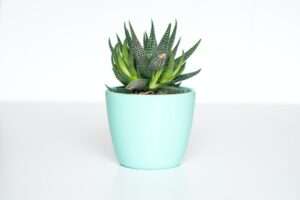
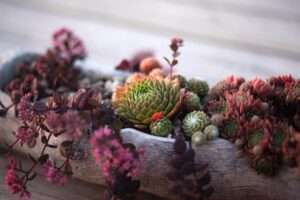



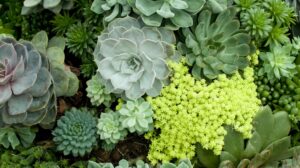
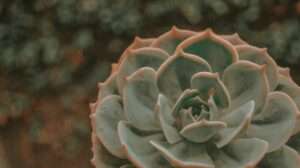
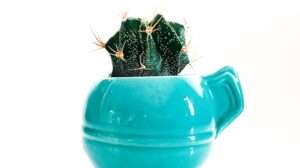
Add Comment